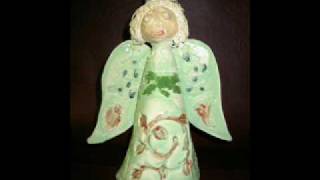Repetition Meaning in Art

The concept of repetition in art is a multifaceted and complex phenomenon that has been explored by artists, critics, and theorists across various disciplines. On one hand, repetition can be seen as a means of creating unity, coherence, and rhythm in a work of art. By repeating certain elements, such as shapes, colors, or patterns, an artist can establish a sense of visual harmony and balance. This can be observed in the works of artists such as Bridget Riley, who uses repetitive geometric patterns to create a sense of optical illusion and visual tension.
On the other hand, repetition can also be used to convey a sense of monotony, boredom, or even anxiety. By repeating the same image or motif over and over again, an artist can create a sense of claustrophobia or unease, highlighting the banality and superficiality of modern life. This can be seen in the works of artists such as Andy Warhol, who used repetition to comment on the commodification of consumer culture and the banality of everyday life.
One of the key aspects of repetition in art is its ability to create a sense of familiarity and recognition. When we encounter a repeated image or motif, our brains quickly recognize it and make connections to previous experiences or memories. This can be used to great effect by artists, who can use repetition to create a sense of narrative or storytelling. For example, the artist Christian Marclay used repetition in his work “The Clock” to create a 24-hour video montage of clock faces and time-related scenes from film and television history.
In addition to its aesthetic and conceptual functions, repetition also plays a crucial role in the technical and material aspects of art production. For example, the process of printing or casting involves repetition, as multiple copies of the same image or object are produced. This can be seen in the works of artists such as Jasper Johns, who used repetition to create multiple versions of the same image, each with slight variations and differences.
- Initial creation: The artist creates an initial image, object, or motif that will be repeated.
- Repetition: The artist repeats the initial image or motif, either exactly or with slight variations.
- Variation: The artist introduces variations or changes to the repeated image or motif, creating a sense of tension or contrast.
- Resolution: The artist resolves the repetition, either by creating a sense of closure or by leaving the viewer with a sense of uncertainty or ambiguity.
Despite its importance in art, repetition is often misunderstood or underappreciated by audiences and critics. This can be due to a number of factors, including the tendency to view repetition as boring or unoriginal, or the assumption that repetition is simply a matter of copying or reproducing the same image or motif over and over again. However, as we have seen, repetition is a complex and multifaceted phenomenon that can be used to create a wide range of effects and meanings in art.
In conclusion, repetition is a powerful and versatile tool in the artist’s arsenal, allowing them to create complex and nuanced works of art that engage and challenge the viewer. Whether used to create unity and coherence, to convey a sense of monotony or anxiety, or to explore the technical and material aspects of art production, repetition is an essential element of the artistic process.
- Creates unity and coherence
- Conveys a sense of rhythm and harmony
- Allows for the exploration of technical and material aspects of art production
- Can be seen as boring or unoriginal
- Can create a sense of monotony or anxiety
- Can be difficult to execute and control
FAQs:
What is the purpose of repetition in art?
+The purpose of repetition in art is to create a sense of unity, coherence, and rhythm, as well as to convey a sense of monotony, boredom, or anxiety. Repetition can also be used to explore the technical and material aspects of art production.
How does repetition affect the viewer's experience of a work of art?
+Repetition can create a sense of familiarity and recognition in the viewer, as well as a sense of tension or contrast. Repetition can also be used to engage the viewer on a deeper level, encouraging them to contemplate and reflect on the work of art.
Can repetition be used in different types of art, such as music and literature?
+Yes, repetition can be used in different types of art, including music and literature. In music, repetition is used to create rhythm and harmony, while in literature, repetition is used to create rhythm, emphasis, and meaning.
In the context of art history, repetition has played a significant role in the development of various styles and movements. From the repetitive patterns of Islamic art to the serial productions of Pop Art, repetition has been used to create a sense of unity, coherence, and rhythm, as well as to convey a sense of monotony, boredom, or anxiety. As we continue to explore the complexities of repetition in art, we may uncover new and innovative ways to use this powerful tool to create meaningful and engaging works of art.


